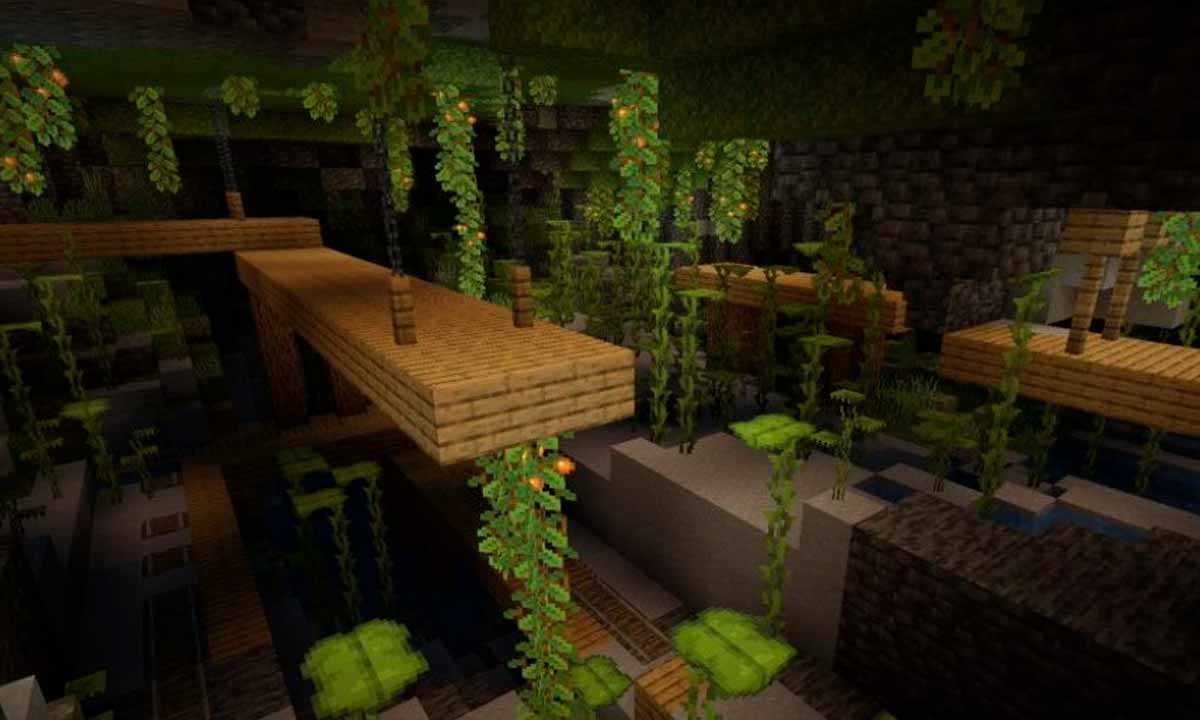With the permission of the great caves of the depths, in which to look for the guardian, one of the most anticipated novelties of Minecraft 1.17 is the lush caves, the lush caves.
A biome that comes to substantially enrich the subsoil and that, thanks to the 21W10A snapshot, it is now possible to test, albeit with an important limitation, which prevents it from being enjoyed in a “normal” game.
Something that, however, should actually be a constant with snapshops, remembering that they are published so that users can test the news, not for their normal games.
And what limitation is that? Well, at the moment lush caves can only be tested on maps of a single biome. That is, you will not find them on normal maps, made up of all the biomes in the game.
Therefore, it is recommended that you create a new map with this Minecraft 1.17 snapshot (now we explain how to do it) that is of a single biome, choose lush caves and explore the subsoil to see this biome first-hand. And, once this is done, go back to your normal games.
If you don’t know how to install the Minecraft 1.17 snapshots, in this article we will explain how to do it and, as I usually indicate in these cases, these indications, as well as the news of the beta versions, are for the version developed in java, not for Bedrock.
With these points in mind, when you have snapshot 21W10A installed, follow these steps:
- Choose single player mode and click on create a new world.
- Make the adjustments you want (difficulty, tricks, mode, etc.), once to your liking, click on More world options.
- Click four times on the “World Type” button so that, on its right, “Unique Biome” is displayed.
- Click on the “Customize” button and, in the list that will appear, choose “Lush caves” and click on “Done”.
Then start the game as you normally do and, regardless of the seed used to generate the map, the entire subsoil of the map should be made up of the new Minecraft 1.17 lush caves.
However, if you want to be “academic” in your search for the new underground biome, what you will have to do is look for a tree of azaleas on the surface, as they are supposed to be the indicator that several layers below you will find a lush cave.
My recommendation, given the limitations, is that you create a map in creative mode. Unless you are a great lover of challenges and want to see if you can survive on such a limited map, it is a map that will give you nothing more than exploring these new caves, waiting for later snapshots of Minecraft 1.17 to incorporate the lush dig into normal maps.
After ten minutes of exploration you will have had enough. Or, in any case, that you set yourself as the only objective, in survival mode, to reach one of them and explore it.
And what will you find in the lush caves of Minecraft 1.17? Well, a biome that will undoubtedly surprise you. The choice of the adjective exuberant seems quite successful, as you will find more vegetation than in some surface biomes.
You will mainly find green, lots of green, both on the roof and on the ground, and huge hanging vines, with plenty of azaleas (both green and in bloom) and the new spores. This is how Mojang sums it up in the Minecraft 1.17 snapshot 21W10A notes:
-
Moss covers floors and ceilings
-
Spore flowers grow from the ceiling and drip particles.
-
It contains clay pools with dripleaf plants growing from them.
-
Contains azalea bushes and flowering azalea bushes.
-
The azalea tree loves to have its roots in lush caves, so if you find an azalea tree (either above ground or in a cave), you will know that there is a lush cave below you.
-
Cave vines with glowing berries grow from the ceiling and illuminate the caves.
The last point is particularly important since, indeed, these caves are much brighter than normal ones , to the point that you could even explore them without torches.
We will have to wait to see the final adjustments in the final version of Minecraft 1.17, but what we can see in the snapshot is, without a doubt, very promising and very, very lush.

